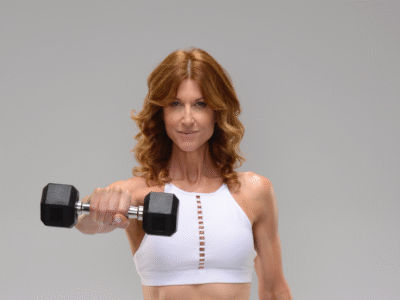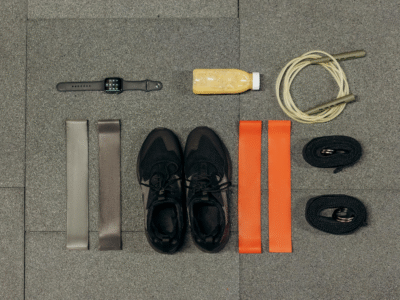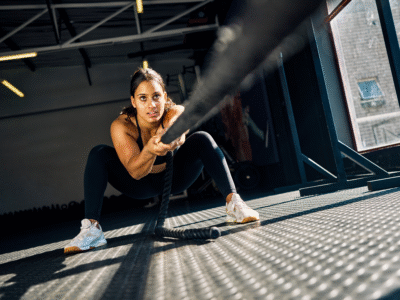From ashtanga to vinyasa, we look into eight different yoga variations and the health benefits they bring.
They say yoga is the union of body, mind, and spirit; just a few minutes of practice at the end of a long day can help you reconnect with yourself and even improve your future health. Many know of the health benefits of yoga — improved strength, flexibility and balance — but it can also be a great antidote to a hectic lifestyle by promoting calmness and even reducing the stress hormone cortisol.
Finding the yoga style that’s best suited to you, whether you’re looking for mental, physical or spiritual support, is crucial to making yoga a part of your life and reaping the benefits. You can take advantage of free introductory classes in your neighborhood or online to sample a range of styles, but if you want to try them out from home all you need to get started is an exercise mat and some floor space. Here are different styles and online yoga classes to try.
Ashtanga: a holistic yoga practice of ‘eight limbs’
This slightly more modern form of yoga became popular in the last century and focuses on the eight limbs of yoga detailed in the Yoga Sutras of Patanjali. Ashtanga is a swift and intense yoga style to help improve focus, balance and coordination. You’ll follow a sequence of advanced yoga postures, performed in a specific order, which emphasise the flow and breath between movements.
Bhakti: a spiritual approach
This form of yoga is rooted in Hindu devotion to a god and one of the most spiritual forms of yoga, not to be taken lightly. With a focus on chanting, singing and dancing, whether you believe in a god or not it teaches selflessness and encourages practitioners to open themselves up to something celestial or a higher consciousness.
Bikram: hot yoga
Arguably the trendiest, this type of yoga will sometimes be referred to as ‘hot yoga’ with dedicated Bikram studios popping up all over the country in recent years. Classes take place in a room where the temperature is between 30 and 39 degrees, so you get hot and sweaty while you flow. Moving through 26 poses performed twice, Bikram is great for increasing circulation, flexibility and strength, and improving cardiovascular health. You’ll need to stay hydrated before, during and after the class as you’ll be sweating so much you’ll lose a lot of water.
Hatha: ‘the yoga of force’
Most forms of Western yoga can be defined as hatha, which simply refers to the practice of physical postures. Hatha yoga involves the breath, body and mind intertwining, with classes evolving around yoga poses, structured breathing and meditation. It’s a great way to stretch, unwind and release tension, and is excellent for beginners due to the relaxed pace.
Kundalini: release your energy
Another highly spiritual form of yoga, Kundalini is a blend of movement, dynamic breathing techniques, meditation and the chanting of mantras. This yoga practice is said to build physical vitality and increase self-awareness. Your Kundalini — energy or spiritual lifeforce — once set free from the base of your spine through this form of yoga, promises to help you move past your ‘ego’ while also delivering physical and mental health benefits.
Restorative: rest and stretch
All about slowing down and opening your body through passive stretching, restorative yoga activates the parasympathetic nervous system, which impacts the body’s resting state and digestive speed, said to begin a process of physical healing. Moving through only a few postures over the course of an hour, each move is held for long periods of time and can be done with the support of yoga blocks and bolsters.
Vinyasa: flow yoga
This style requires you to move from one pose to another seamlessly and in time with your breathing, which is why it’s commonly referred to as flow yoga. Moving quickly through many yoga postures, no two classes are ever alike but it may be fast and physically challenging. Through connecting breath to movement in this way, it can improve your flexibility, strength, cardiovascular health and stamina.
Yin: yoga based on traditional Chinese medicine
While most forms of yoga, which can be referred to as ‘yang’, focus on muscles and breathing, yin yoga looks to traditional Chinese medicine to target joints, bones, deep connective tissue (fascia) and balance your qi (energy). One of the more tranquil and rejuvenating styles, Yin yoga guides you to relax into each posture, releasing naturally without pushing or straining while holding the positions for several minutes at a time, stretching into the deeper tissues of the body. It’s great for lowering stress levels, promoting a deeper connection and appreciation of yourself and is even said to help balance hormones, with one study showing that relaxing and stretching styles of yoga, such as yin, can help reduce the stress hormone cortisol.













